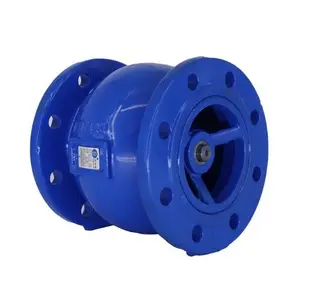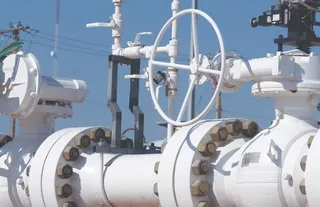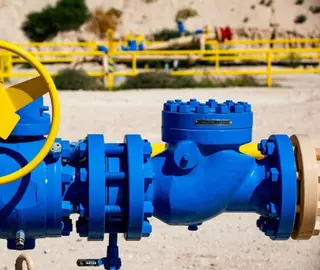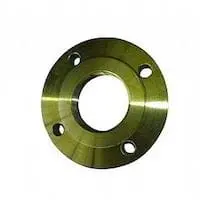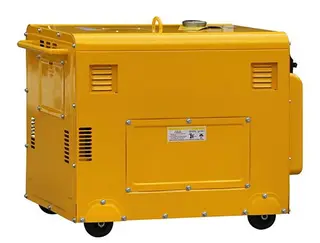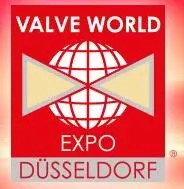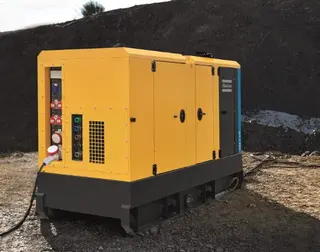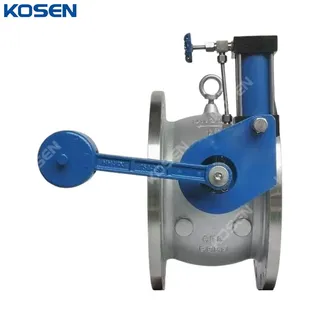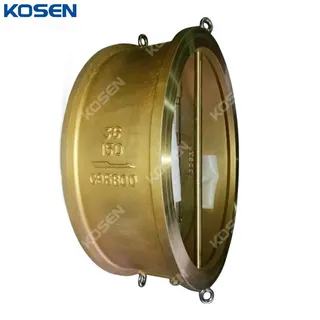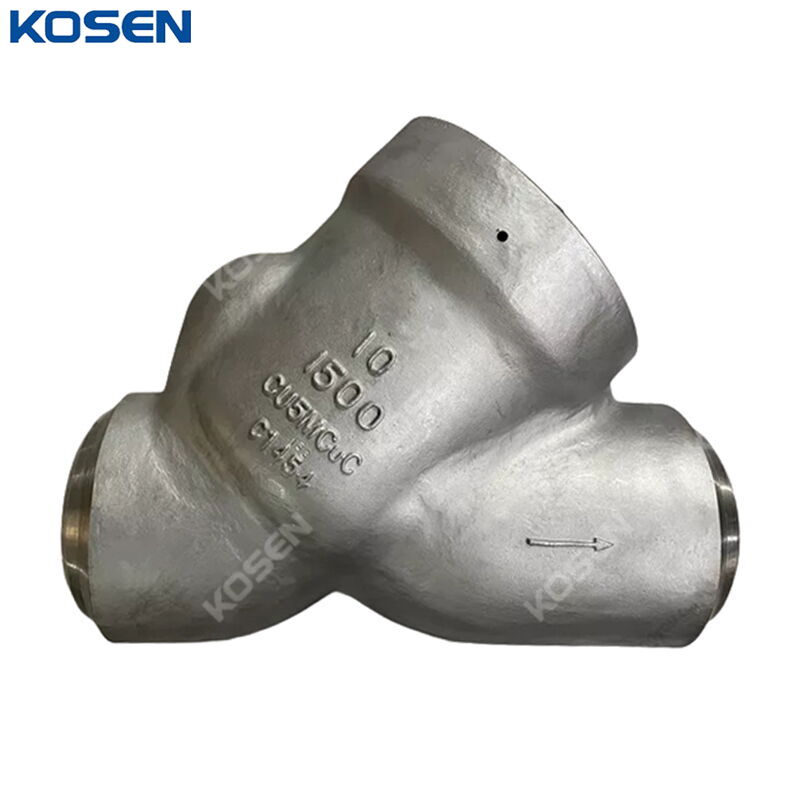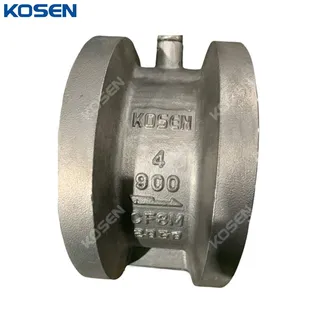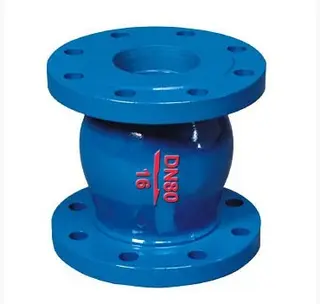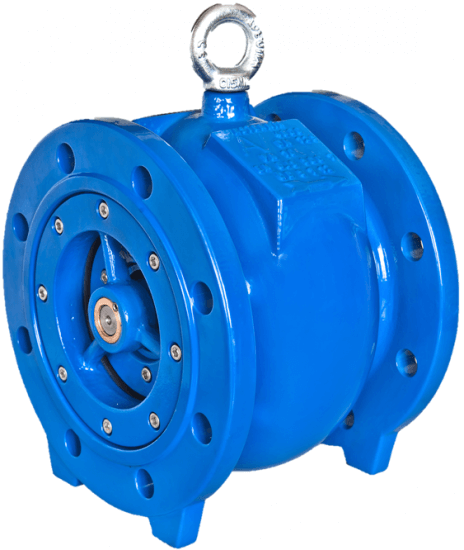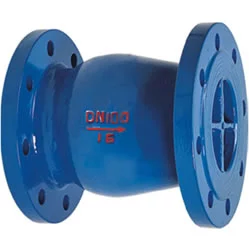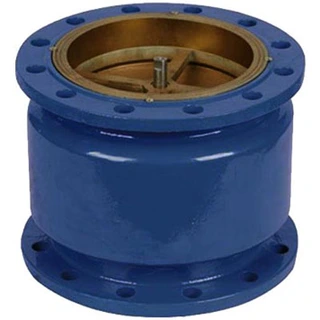Silent Check Valve: Silent Guardian Protecting Pipelines
In modern construction and industrial fields, pipeline systems function much like the blood vessels of the human body, bearing the important task of transporting various media. However, during operation, pipeline systems often face various problems, among which medium backflow and water hammer are particularly common. These issues not only disrupt the normal operation of pipeline systems but also pose serious safety risks. Fortunately, the emergence of the silent check valve provides an effective solution to these problems.
What Is a Silent Check Valve?
A silent check valve, also known as a non-return valve or one-way valve, is an automatic valve. It relies on the medium's own flow to automatically open and close the valve disc, and its primary function is to prevent backflow of the medium within the pipeline. When the medium flows in the designated direction within the pipeline, the valve disc is pushed open by the pressure of the medium, allowing smooth passage; when the medium attempts to flow backward, the valve disc quickly fits tightly against the sealing surface of the valve seat due to its own weight and the reverse force of the medium, thereby preventing reverse flow. This valve design ingeniously utilizes principles of fluid dynamics to achieve effective control of the medium's flow direction.
Inside the silent check valve, a specialized silencing device is also installed. When fluid passes through the valve, the silencing device absorbs and disperses the energy of the fluid, reducing the amplitude of pressure fluctuations and effectively lowering noise. Meanwhile, the quick-closing feature of the valve disc helps mitigate water hammer, protecting the pipeline system from pressure fluctuation damage.
Advantages of Silent Check Valves
Next, we explore the unique structural features and remarkable advantages of silent check valves. These characteristics not only make them stand out among various valve types but also serve as key factors enabling stable operation under various complex working conditions.
1. Flexible Installation Methods
The valve disc of the silent check valve adopts a center-axis guide at both the inlet and outlet ends. This design makes the opening and closing action extremely flexible and ensures precise positioning. Therefore, the silent check valve can be installed horizontally or vertically, effectively adapting to different engineering requirements and pipeline layouts. Whether in high-rise building water supply and drainage pipelines or complex industrial pipeline systems, the silent check valve can easily handle installation and maintenance, providing great convenience.
2. Spring Loading and Fast Closing
The valve disc of the silent check valve adopts a spring-loaded design. The elastic potential energy of the spring plays a crucial role during valve closing, enabling rapid closure. When the medium reverses, the spring force quickly pushes the valve disc to tightly fit against the sealing surface of the valve seat, effectively eliminating water hammer. Water hammer is a pressure fluctuation caused by fluid inertia, which can severely damage pipelines and equipment. The silent check valve, through its rapid closing action, promptly stops water hammer, protecting pipeline integrity and ensuring safe equipment operation.
3. Excellent Sealing Performance and Low-Noise Operation
The sealing surface of the silent check valve adopts an advanced composite sealing structure including an O-ring elastic seal and a metal hard seal. This structure not only ensures excellent sealing performance when the valve is closed, preventing medium leakage, but also ensures low-noise operation during use. When the valve closes, the valve disc makes smooth, tight contact with the sealing surface, avoiding noise caused by collision or friction and creating a quiet operating environment for users.
4. Compact Structure and Lightweight Design
The silent check valve features a small size and lightweight body. The valve body adopts a “waist-drum” exterior design, while the valve disc adopts a “bullet-head” shape. This unique design improves medium flow direction and reduces flow resistance. Meanwhile, the valve adopts a short-structure form. Although its head loss is slightly larger than that of a lift-type silent check valve, it remains compact, cost-effective, and highly efficient. In addition, a non-metallic lubrication sleeve is installed between the guide shaft and the guide frame, ensuring flexible movement of the valve disc without jamming, further improving reliability and service life.
5. Fatigue Resistance and Long Service Life
The structural design of the silent check valve fully considers long-term operational reliability. The framework-style rubber sealing ring is directly embedded into the valve body, preventing long-term flushing by pipeline fluids and greatly extending the sealing ring's service life. The valve disc has a short travel distance, effectively preventing water hammer and reducing impact and wear during operation. These design features give the silent check valve strong fatigue resistance, long service life, and stable ongoing performance in various complex pipeline systems.
Recommendations for Selecting Silent Check Valves
When selecting a silent check valve, it is necessary to choose the appropriate valve based on the specific usage environment and requirements.
1. Appropriate Material
Silent check valves come in various materials, such as stainless steel, cast iron, copper, and more. Different materials suit different environments and media. For corrosive media, corrosion-resistant materials such as stainless steel are recommended. Stainless steel offers excellent corrosion resistance, high-temperature resistance, and mechanical performance, suitable for complex chemical environments. Cast iron silent check valves offer low cost and high strength, making them suitable for general industrial and civil water supply and drainage systems. Copper valves offer good corrosion resistance and thermal conductivity, making them ideal for hot water systems.
2. Proper Valve Size
The size of the silent check valve must match the pipe diameter and flow requirements. A properly sized valve ensures effective flow control and prevents operational issues caused by oversized or undersized valves. An oversized valve may increase fluid resistance, affecting flow, while an undersized valve cannot meet flow requirements, hindering system operation. Therefore, selecting the appropriate size according to actual pipeline parameters and flow requirements is essential.
3. Proper Valve Disc Type
Silent check valves come in various disc structures such as single-disc and double-disc types. Different structures suit different fluids and application scenarios. The single-disc structure is simple and compact, suitable for small-flow pipeline systems; the double-disc structure offers better sealing and water hammer resistance, suitable for high-pressure and large-flow systems. Selection should be based on the specific application scenario and fluid characteristics.
4. Consider Silencing Design
If noise control is a priority, it is important to choose a silent check valve with enhanced noise-reduction features. High-quality silent check valves incorporate advanced silencing technologies and structural designs that effectively reduce noise and water hammer. For example, using specialized silencing devices and spring-loaded designs allows low-noise operation and provides a quiet environment.
Application Fields of Silent Check Valves
Thanks to their unique advantages, silent check valves are widely used across multiple fields.
1. Water Supply and Drainage Systems in High-Rise Buildings
In high-rise buildings, stable water supply and drainage operation is crucial. Silent check valves can be installed at pump outlets to prevent backflow when pumps stop, protecting pumps from damage. They also effectively reduce water hammer and noise, creating a quiet living environment. In drainage systems, they prevent sewage backflow, avoiding corrosion and blockage of pipelines.
2. Fire Protection Water Systems
The reliability of fire protection water systems is directly related to human safety. Silent check valves ensure rapid and stable delivery of water during emergencies. They prevent backflow when fire pumps stop and maintain pressure stability in the system, ensuring reliable water supply for firefighting. Their low-noise operation makes them suitable for various environmental conditions.
3. Industrial Water Supply and Drainage Systems
In industrial production, water supply and drainage systems are essential. Silent check valves prevent medium backflow and protect equipment. For example, in chemical pipelines, they prevent corrosive media from flowing backward, avoiding corrosion of pipelines and equipment. In food processing systems, they help maintain water quality and prevent contamination.
4. HVAC Systems
Heating, ventilation, and air-conditioning systems transport hot and cold water through pipelines. Silent check valves prevent backflow and ensure normal operation while mitigating water hammer, reducing noise, and improving efficiency and comfort.
Installation and Maintenance of Silent Check Valves
Proper installation and regular maintenance are key to ensuring long-term stable performance.
1. Preparations Before Installation
Before installing the silent check valve, clean the valve thoroughly, wipe away moisture with a soft cloth, and eliminate correctable defects from transportation. Verify all valve markings, nameplate information, specifications, model, and material to ensure compliance with usage requirements.
2. Installation Precautions
The installation position depends on the valve type. Horizontally installed silent check valves should be mounted on horizontal pipelines with the valve cover facing upward for lift-type valves; vertical-type valves should be installed on vertical pipelines. The valve should not bear pipeline weight, and external forces from the pipeline system should be avoided. Ensure that the flow direction of the medium aligns with the arrow direction marked on the valve body.
3. Maintenance and Care
When not in use, seal both ends of the silent check valve and store it in a dry, ventilated indoor environment. For long-term storage, check it periodically and apply anti-rust measures. During operation, regularly inspect sealing performance and overall condition. Check whether the valve disc operates smoothly and whether the sealing surface is worn or damaged. Repair or replace parts as needed to ensure proper operation.
Conclusion
In summary, as an important valve for pipeline systems, the silent check valve plays an indispensable role in modern construction and industrial applications. With its unique working principle, excellent performance, and wide application range, it provides reliable protection for stable pipeline system operation. By selecting, installing, and maintaining silent check valves according to specific needs and conditions, users can fully benefit from their advantages and create greater value in production and daily life.
Send your message to this supplier
Related Articles from the Supplier
Check Valve Maintenance And Maintenance
- Dec 14, 2024
Classification Of Check Valves
- Dec 14, 2024
What Are The Related Notices For The Check Valve?
- Dec 14, 2024
Related Articles from China Manufacturers
Leakages in Check Valve Flanges of Oxygen Pipelines
- Aug 07, 2023
Tips for Installing Silent Check Valve
- Nov 30, 2015
Tips for Installing Silent Check Valve
- Sep 23, 2016
Related Products Mentioned in the Article
Zhejiang Kosen Valve Co., Ltd.
- https://www.kosenvalve.com/
- Address: Dongou Industrial Zone, Oubei, Wenzhou, Zhejiang, China
- Phone: 86 577 5798 7171
- Business Type: Industry & Trading, Manufacturer,
Supplier Website
Source: https://www.kosenvalve.com/media-hub/silent-check-valve-silent-guardian-protecting-pipelines.html

